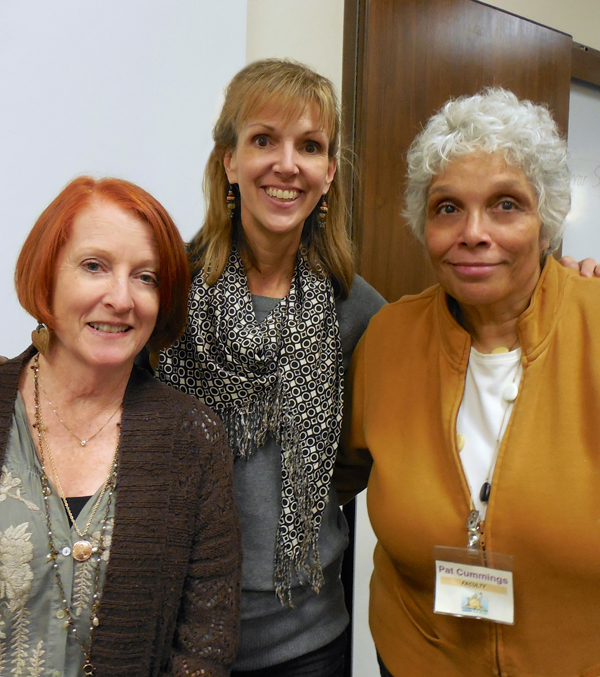I confess, I was a little reluctant to go to the Society of Children’s Book Writers and Illustrators (SCBWI) conference March 1-2, for two reasons. First, I had just started working on my new book dummy and I wasn’t sure I was ready to show it at the illustrator intensive with Pat Cummings. Second, I was wondering if I would learn anything new at the conference. I was thinking I might get more accomplished if I just stayed home and worked on my illustrations. While I always get good information going to the SCBWI first-Saturday meetings, I still wondered how much more new information could there be?
I’m happy to report that the conference was full of fresh information, as well as some great reminders.
Pat Cummings was the speaker for the illustrators. She has 35 published books, some of which she also wrote. She was funny and charming and was so generous with her wisdom and time, even though she was fighting a nasty cold.
Here are just a few of her helpful tips…
- Become your character. Really get into their head. What would they really do?
- Do a full size dummy to show publishers so they can see detail.
- Do four finished color illustrations for the dummy and the rest can be like a coloring book, in black and white.
- Don’t send a dummy if they didn’t ask for one.
- The publisher’s prefer unfinished work. If you bring a finished book, they feel you are not going to be flexible with any changes.
- Find the editors you want to work with and send them your promo card. Look for the editors that really would understand your “voice”.
- If you’re the writer, 3 attempts to resolve the protagonist’s problem bring satisfying closure.
- Send out promotional postcards every 4 months. You may not think they are being seen but they might just be waiting for the right project to call you.
- If you send out postcards, make them dynamic. Show expression, character development, action, color, perspective, texture, lighting range, and mood. You want your postcard to stand out among all the others.
- Only put your best work in your portfolio. There should be no excuses for why something doesn’t look right. 10 to 12 pieces is fine. If you have one mediocre piece, the whole book comes down.
- If you show your portfolio, only show what you want to do. If you don’t like drawing fish, don’t show illustrations of fish or that’s all you will get. If you don’t really like watercolor but you did that one good piece, don’t show it.
- Have a webpage. Even if it’s a free site, have a site where art directors and editors can look at your work.
- If you’re the writer and illustrator, have your “elevator pitch” ready. How can you tell your story in one line? If you have the opportunity to sell your book, you will probably only have a moment to do so. The pitch also helps you to succinctly understand what you’re doing and where you are going as well.
Faculty for the conference:
Larry Dane Brimner – full-time writer and author of more than 150 books for young readers from Pre-k to young adult, nonfiction and fiction.
Emily Easton – Publishing Director, Walker Books for Young Readers, an Imprint of Bloomsbury.
Mallory Kass – is an editor at Scholastic Press.
Jamie Weiss Chilton – is an Agent with the Andrea Brown Literary Agency.
Salina Yoon – award-winning author/illustrator of over one hundred novelty books for young children, as well as the popular Penguin picture book series with Walker Books for Young Readers.
By Lori Mitchell

